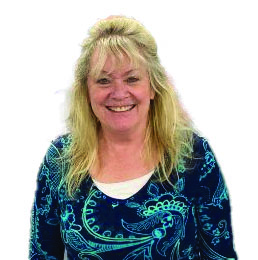Sheila Harris: Scope for the imagination

I’ve lived in the Ozarks for over 50 years, but until recently, I knew very little about the karst underlayment below us, nor, to be honest, was I even familiar with the word “karst.”
Since learning, I’ve been mesmerized. Now, the idea of karst provides me with plenty of “scope for the imagination,” as Anne of Green Gables would say.
There’s something mysterious, wonderful and a little spooky in knowing that the limestone and dolomite bedrock below our feet is constantly dissolving to provide direct portals to a labyrinthian underworld where water flows freely: a “vast underground plumbing system,” as hydrologist and Cave Research Foundation (CRF) volunteer, Ben Miller, calls it.
For Miller, karst is not an exercise in imagination, but the backdrop for real-life, boots-on-the-ground research about how water travels above and below ground in the Ozarks. Miller was at the Emory Melton Inn & Conference Center in Roaring River State Park on April 18 to present the results of his and co-CRF volunteer Bob Lerch’s five-year dye-tracing study to determine the outer reaches of Roaring River Spring’s recharge basin (the area from which it draws water).
The study was conducted in partnership with Missouri State Parks, and with help from Roaring River State Park personnel.
Roaring River Spring’s recharge area, Miller says, encompasses 47.34 square miles, not entirely an unexpected dimension for a spring with a depth of 472-plus feet.
While all of the material that Miller presented was fascinating, his description of a dye-injection in Rockhouse Creek Valley particularly gripped my imagination. In addition to Roaring River Valley, Rockhouse Creek Valley and its historic cave have been a focus of mine for the past two years, since my daughter found a semi-fossilized large animal bone embedded in dirt alongside the farm road that runs through the valley.
After examination, Greene County geologist, Matt Forir, told us the bone was from the leg of a bison once native to the area. After a “sniff-test,” which involved heating a portion of the bone with a cigarette lighter to detect traces of remaining hair, Forir said he believes the bison lived as recently as the early 1800s, and, because of cut marks along it, appeared to have been butchered by hand.
While my daughter and I were hoping for a timeframe a bit more prehistoric, the find itself was a bit unusual: but not for Rockhouse Creek Valley.
According to artifactual evidence and historical records, including a 1979 book published by past Rockhouse Cave owner, Larry Tyler, the cave was used as a “tool manufacturing” center by early Native Americans, and a smaller, nearby cave contained evidence of a cannibalistic tribe.
What a gruesome tale the rocks could tell!
In “The History of Rockhouse Cave,” Tyler states that, in southern Missouri, only in Rockhouse Creek Valley and in Roaring River Valley, “is there to be found such a close association of various geologic layers: exposed levels of the Ordovician, Silurian, Devonian and Mississippian eras.”
Barry County, in other words, is home to some unique geology, and two of our most well-known valleys share similar characteristics.
Roaring River Valley lies along the Eureka Springs Escarpment, a jagged division of the younger (and taller) Springfield Plateau from the older and settled Salem Plateau. That escarpment also divides Rockhouse Creek Valley, situated on the Salem Plateau, from the higher Springfield Plateau, to the north.
Along the Eureka Springs Escarpment, anthropological research shows evidence that the melting ice from the upper plateau, flooded the valleys below, often trapping animals and debris in the floodwater as it drained through sinkholes in the valley floor — perhaps even the known and rapidly-draining sinkhole in the Rockhouse Valley pasture.
Conditions would have been right, say anthropologists, for the fossilization of trapped detritus. Perhaps similar conditions contributed to the preservation of my daughter’s found bison bone.
Either way, it’s fodder for my imagination.
Coupled with my newfound knowledge that Ben Miller and Bob Lerch’s dye-trace of the sinkhole in the Rockhouse Valley pasture revealed a connection to Roaring River Spring, I think I’m due for another drive through Rockhouse Valley.
Sheila Harris is a long-time Barry County resident and a sales executive and investigative reporter for the Cassville Democrat with a particular interest in environmental topics. She may be reached at sheilaharrisads@ gmail.com.





